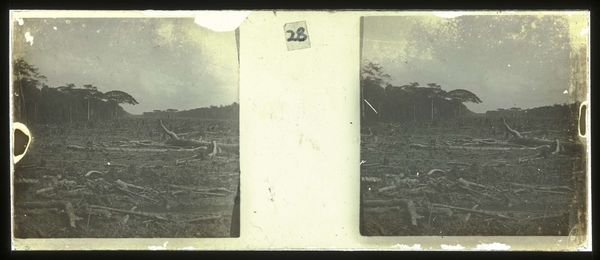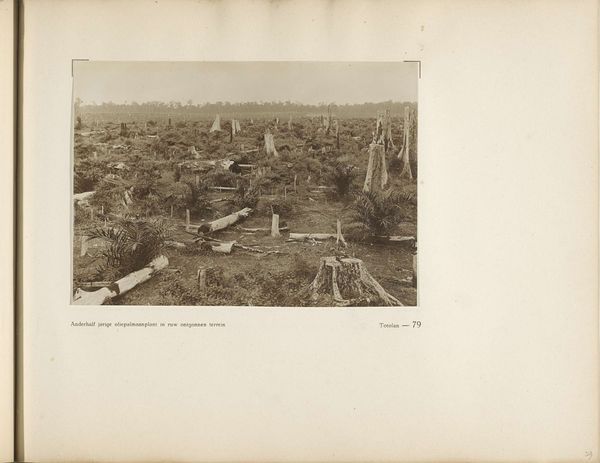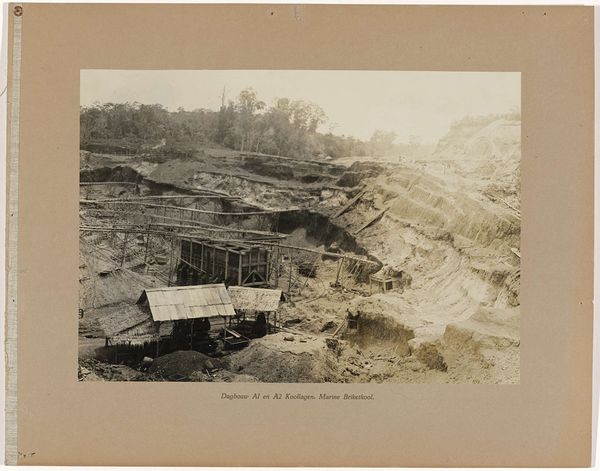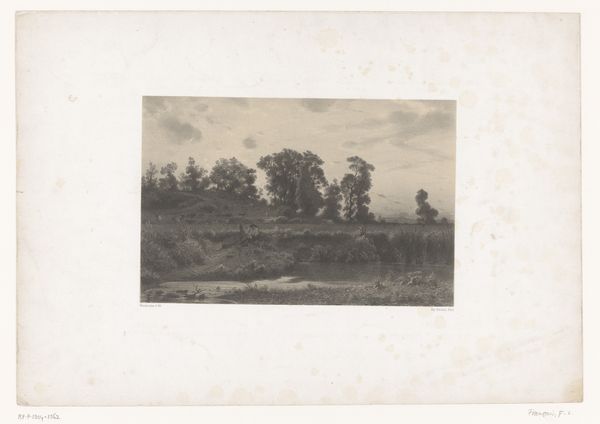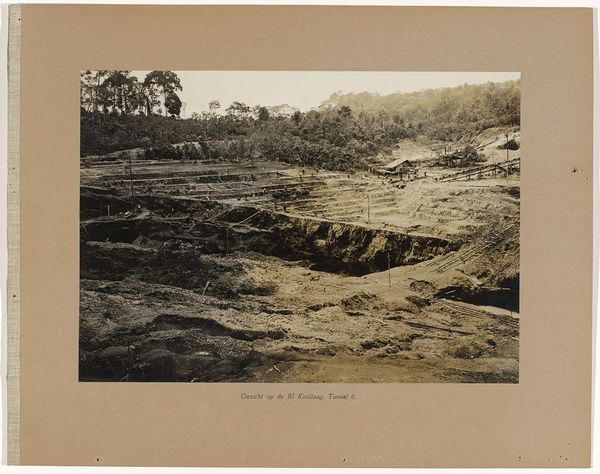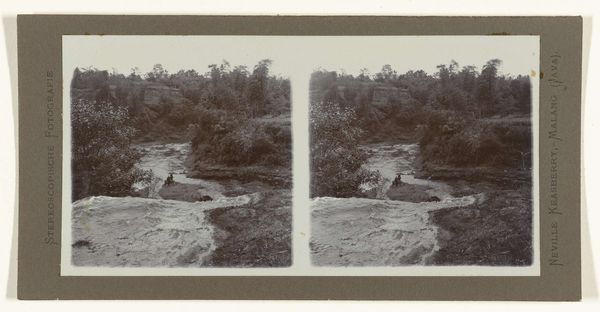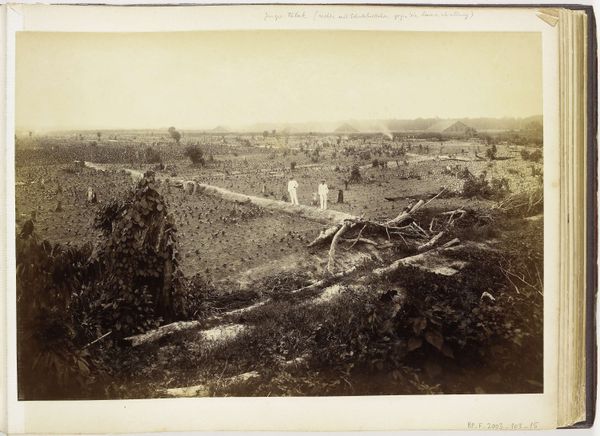
Gezicht op de zaaivelden van een plantage bij Soekaranda, Sumatra (Saatfelder Soekaranda) c. 1890 - 1900
0:00
0:00
photography, gelatin-silver-print
#
landscape
#
photography
#
orientalism
#
gelatin-silver-print
Dimensions: height 277 mm, width 361 mm
Copyright: Rijks Museum: Open Domain
Curator: The air hangs heavy with unspoken stories in this photograph, wouldn't you say? The gelatin-silver print, entitled "Gezicht op de zaaivelden van een plantage bij Soekaranda, Sumatra" or "Saatfelder Soekaranda" in German, was taken somewhere between 1890 and 1900 by Stafhell & Kleingrothe. Editor: It has a melancholic quality. The landscape stretches endlessly, dominated by the repetitive geometry of cultivated fields. I find it difficult to ignore the history embedded within this "scenic" shot of colonial enterprise. It's a photograph that silently screams of labor and exploitation, of orientalist fantasies made real through occupation. Curator: I agree entirely. It’s this very contrast—the seemingly objective photographic lens capturing a landscape pregnant with subjective realities—that intrigues me. Notice how the composition, seemingly innocent, emphasizes the scale of the plantation, swallowing the human element within this vast expanse. There’s an artistry here that unwittingly exposes its own problematic gaze. The horizon feels almost oppressive, as if bearing down on us. Editor: Absolutely, that is part of its potency. What seems like an objective document becomes a window into power dynamics and their violent imprint on the land. It almost romanticizes what could easily be considered as "ecological violence," performed by those same individuals whose wealth and resources relied solely upon human oppression and subjugation to the earth. The presence of large, dying tree foreground, juxtaposed to the well cultivated plantation in the background offers a bleak sense of reality that this place is a graveyard, no? Curator: Exactly. A graveyard of not only ecosystems but of indigenous ways of life as well. This image does serve as a document but it speaks on more than just its surface level depiction. One can observe a graveyard for trees as well if you note the trunks in the foreground that add weight and meaning. This, of course, is what sets apart historical landscapes like these from conventional photos of gardens, trees or parks. Editor: It definitely demands that we confront uncomfortable truths about the foundations of colonial power and their continuous influence. Curator: Indeed, and perhaps in engaging with images such as these, we come a bit closer to not repeating them. Editor: Perhaps, indeed. Perhaps we can learn to see these vistas, not just as landscapes, but as maps of consequence.
Comments
No comments
Be the first to comment and join the conversation on the ultimate creative platform.

